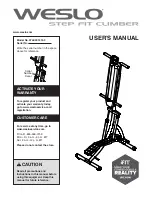
Rolled Edge Sewing
The rolled edge stitch is appropriate for light weight fabrics such as lawn, voile, organdy, crepe, etc. The rolled edge is achieved
by adjusting the thread tension to make the fabric edge roll under the fabric while overlocking. Adjust the thread tension to
change the degree of rolling. To sew rolled edge you need to set the stitch finger lever to "R".
Tip: For a beautiful rolled edge, thread the upper looper with a decorative thread and the needle and lower looper with lightweight regular thread.
2–Thread Rolled Edge
2–Thread Rolled Edge
Select the 2–thread rolled edge stitch.
Engage the 2-thread overlock converter (see page 15).
Use the right needle thread and lower looper thread.
Move the stitch finger lever to "R" (see page 16).
Make a thread chain and test sew on a sample of your fabric
before sewing on your project. Hold the thread chain while
beginning to sew to keep it from curling into the seam.
3–Thread Rolled Edge/Narrow Edge
3–Thread Rolled Edge
3–Thread Narrow Edge
A variant of the rolled edge stitch is the narrow edge. Due to
different thread tension, the seams get a different appearance
and density.
Select the 3-thread rolled edge stitch or the 3–thread narrow
edge stitch.
Use the right needle thread and the upper and lower looper
threads.
Move the stitch finger lever to "R" (see page 16).
Set the stitch length to "1.2–1.3" for a fine seam.
Make a thread chain and test sew on a sample of your fabric
before sewing on your project. Hold the thread chain while
beginning to sew to keep it from curling into the seam.
46
















































